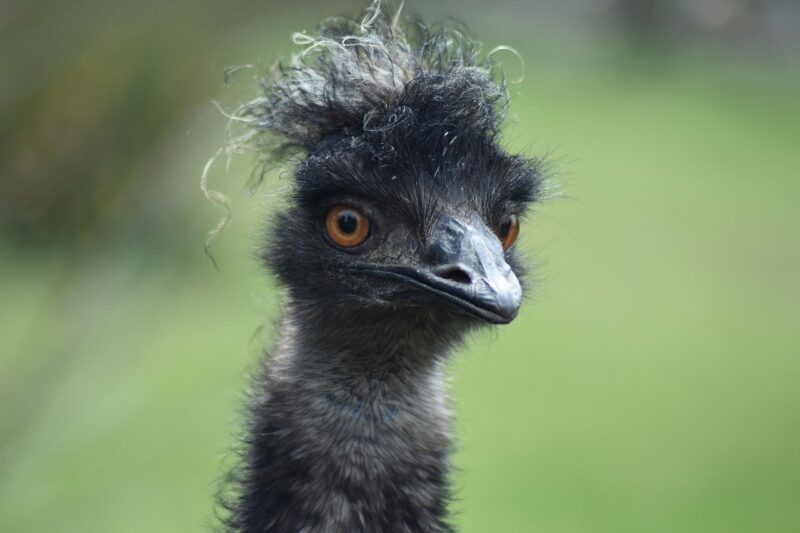
In the annals of history, there are battles fought on the fields of war and those fought in the minds of humanity. One such bizarre yet fascinating event that fits this description is the so-called Great Emu War, which took place in Australia shortly after World War I. It may seem strange that a nation would declare war on a flock of birds, but this peculiar conflict reveals much about human-animal interactions, agricultural challenges, and governmental interventions in rural Australia.
1. The Context: Post-War Australia
The year was 1914, and Australia was still adjusting to the aftermath of World War I. The country faced numerous issues, including a struggling economy and returning veterans searching for work and stability. To revitalize the rural economy, the Australian government began promoting agricultural projects, particularly in Western Australia, where fertile lands had been identified to cultivate crops.
However, they soon faced an unexpected adversary: the Emu, a large and flightless bird that thrived in the Australian landscape. These birds, native to the region, became a significant problem for farmers as they descended upon promising wheat crops in mass gatherings, leading to severe destruction.
2. The Emu Invasion
By 1920, it was estimated that around 20,000 emus had invaded the wheat-producing areas of Western Australia. Farmers reported that groups of these large birds would ravage their fields, trampling crops and consuming as much as they could. This devastation led to an outcry among the farming community, who felt helpless against this feathered foe.
Officials recognized the need to act: the situation was dire, and the farmers’ pleas did not fall on deaf ears. As a result, a plan was hatched to combat the emu problem, leading to what many colloquially dubbed “The Great Emu War.”
3. The War Begins
In late 1932, soldiers of the Australian Army, equipped with machine guns, were enlisted to target the troublesome emus. The rationale was straightforward: if a wartime strategy could eliminate an enemy on the battlefield, why not apply the same methods to these invaders?
The first attempts were made in late November, with soldiers deploying to the Campion district, known for its high emu population. However, the birds proved to be surprisingly elusive. In the initial engagement, the soldiers fired approximately 10,000 rounds but only managed to kill about 1,000 emus. Additionally, the emus would scatter in unpredictable directions, making it challenging for marksmanship to be effective.
The soldiers quickly discovered that these birds were not only intelligent but agile as well, which thwarted their efforts at every turn.
4. The Nature of Resistance
As the emu war raged on, the soldiers faced increasing challenges. The emus began to demonstrate organized behavior, dispersing when threatened but regrouping shortly after. The soldiers’ machine guns were unable to keep up with the shifting dynamics of the flock, leading to a sense of futility.
In total, there were three separate military operations over a course of several months, with varying levels of success and failure. The local population began to mock the army’s inability to subdue the emus, and the situation became almost comical to outsiders. News articles of the time detailed the trials and tribulations faced by the soldiers, noting their frustration and the absurdity of the situation.
5. The Aftermath: No Victory for Man
By December 1932, the government assessed the progress of the emu war and made a decision: the campaign was officially called off. The emus had won the battle, and the soldiers returned to their barracks in defeat. It was evident that nature could not easily be tamed or controlled, even with military intervention.
The emus remained a persistent problem for farmers, but the Great Emu War had far-reaching implications. It highlighted the need for alternative solutions to wildlife management rather than violent confrontations. The humorous nature of the conflict ensured it would be remembered as a quirky chapter in Australian history, illustrating humanity’s relationship with nature.
6. Lessons Learned from the Emu War
As bizarre as it sounds, the Great Emu War offers vital lessons today. It reflects upon the complexities of wildlife management, the consequences of human actions on natural ecosystems, and the absurdity that can arise when we underestimate the challenges we face in our interactions with the environment.
The emus continue to thrive in Australia, having adapted to the environment and the challenges posed by human civilization. This strange conflict serves as a reminder of our responsibility to coexist with nature, promoting solutions like habitat preservation and humane wildlife management.
Additionally, it has become a part of cultural folklore, celebrated through stories, songs, and even merchandise. The Great Emu War transcends mere historical fact and adds an endearing touch of humor and humility to our past.
Conclusion: A Unique Historical Footnote
The Great Emu War may never be classified alongside other great battles of history, but it stands as a unique narrative reflecting human challenges, agricultural struggles, and the unyielding spirit of the emu. A lighthearted yet insightful case study serves as a reminder of the balance we must strive to achieve in our interactions with the natural world.
In the end, while military efforts were unable to quell the emu invasion, they certainly provided a memorable story – one that continues to pique interest and laughter centuries later.







